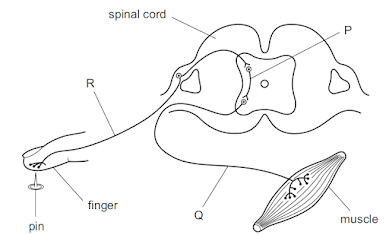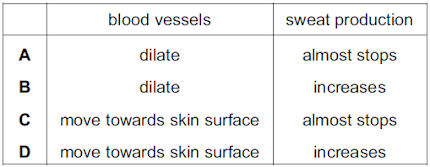IGCSE Paper 1 and 2 questions on Co-ordination and response

1) The diagram represents a simple reflex arc. What is the sequence of nerve cells through which an impulse passes during a reflex action? 2) The diagram shows a neurone. 3) What will be the effect of strenuous exercise on the volume of water lost through the skin and the kidneys? 4) Which labelled part of the eye contains muscle? 5) 6) 7) The diagram shows the skin. Which labelled structure releases sweat? 8) What is a synapse? A a junction between two neurones B a relay neurone C an effector D an electrical signal 9) The diagram shows a simple reflex arc. Which labelled part is the sensory neurone? 10) Some structures in the eye are listed. 1 cornea 2 iris 3 lens 4 retina Which structures contain light receptors? A 1, 2 and 3 B 2, 3 and 4 C 2 and 4 only ...

